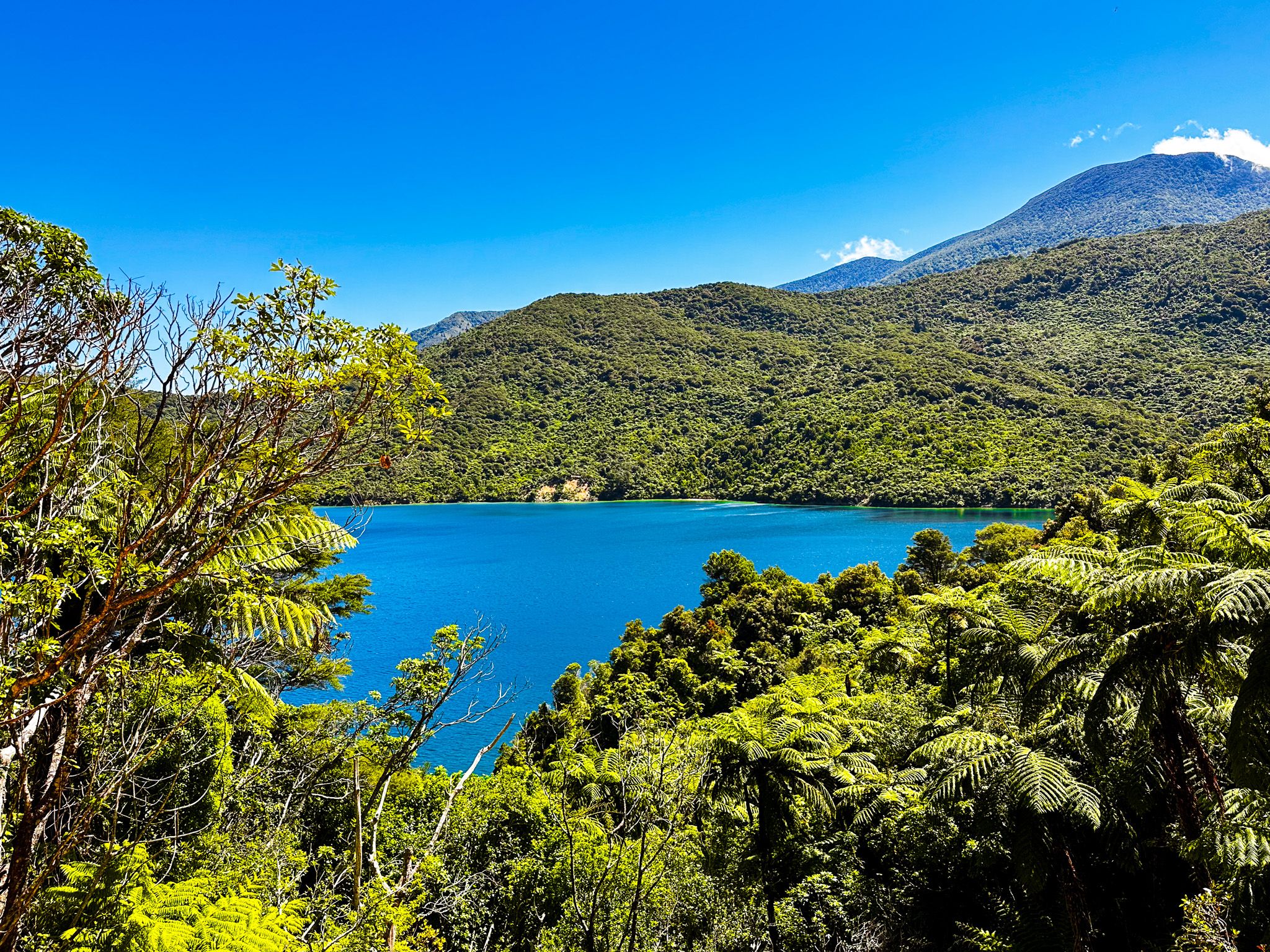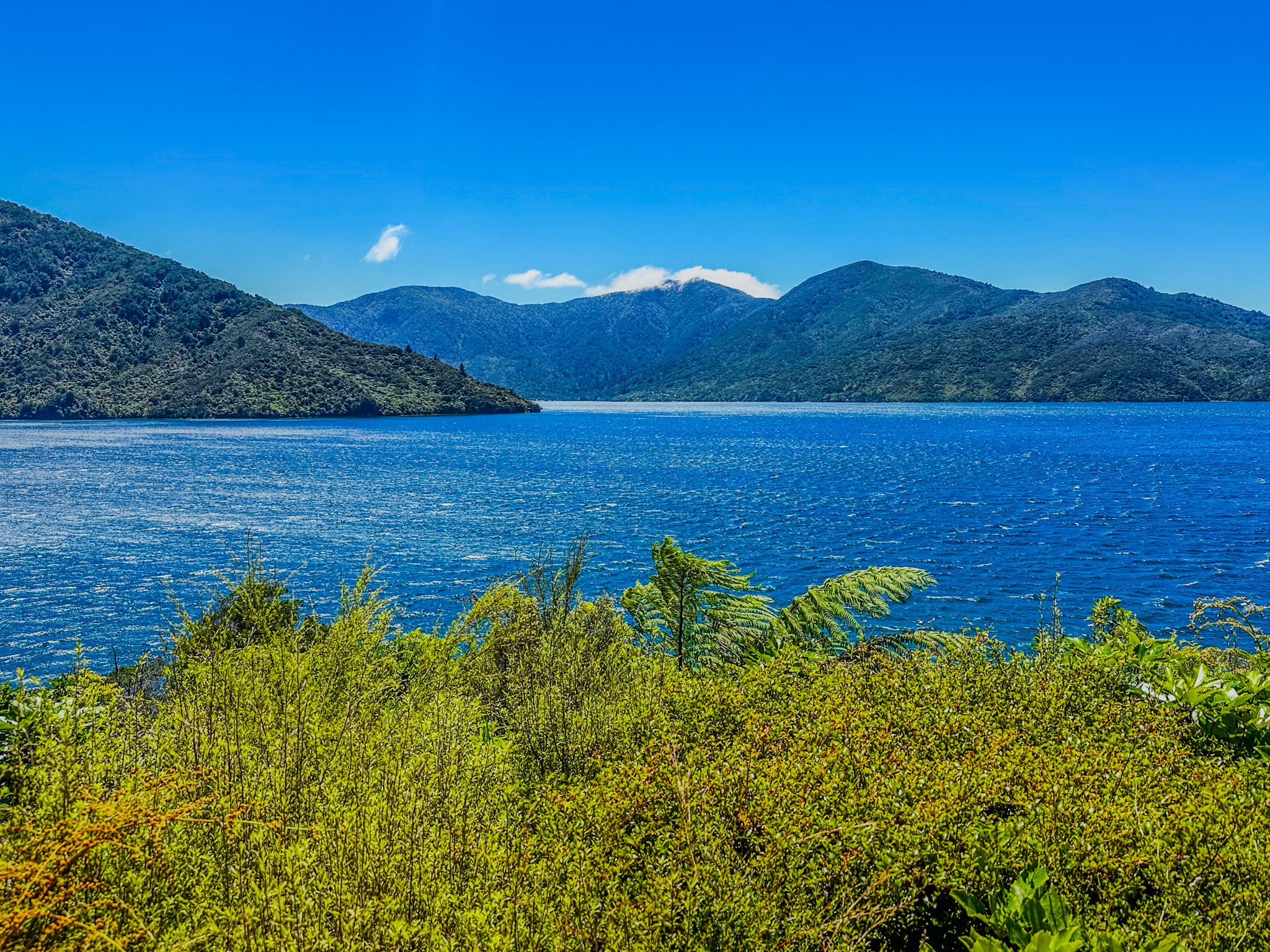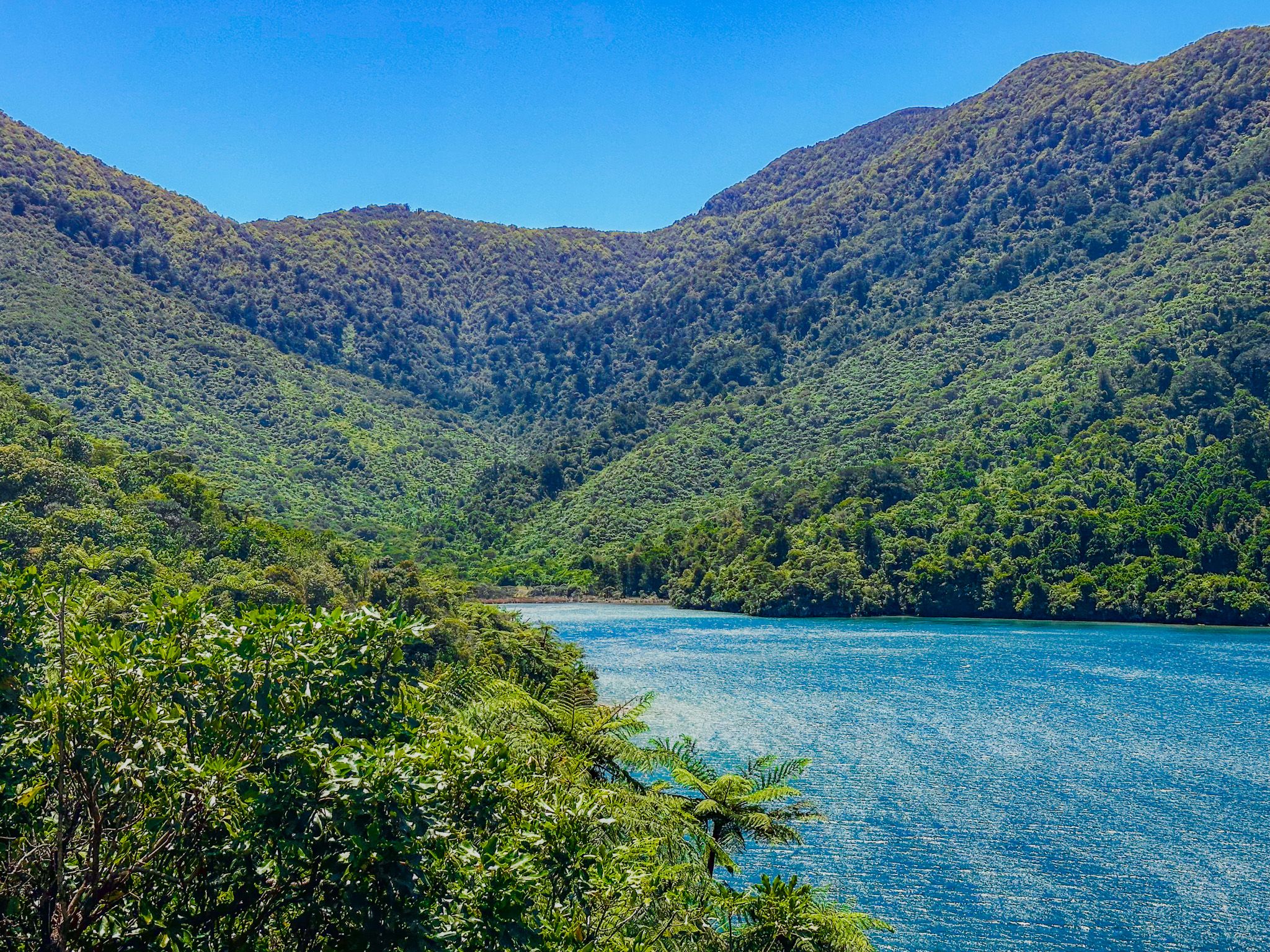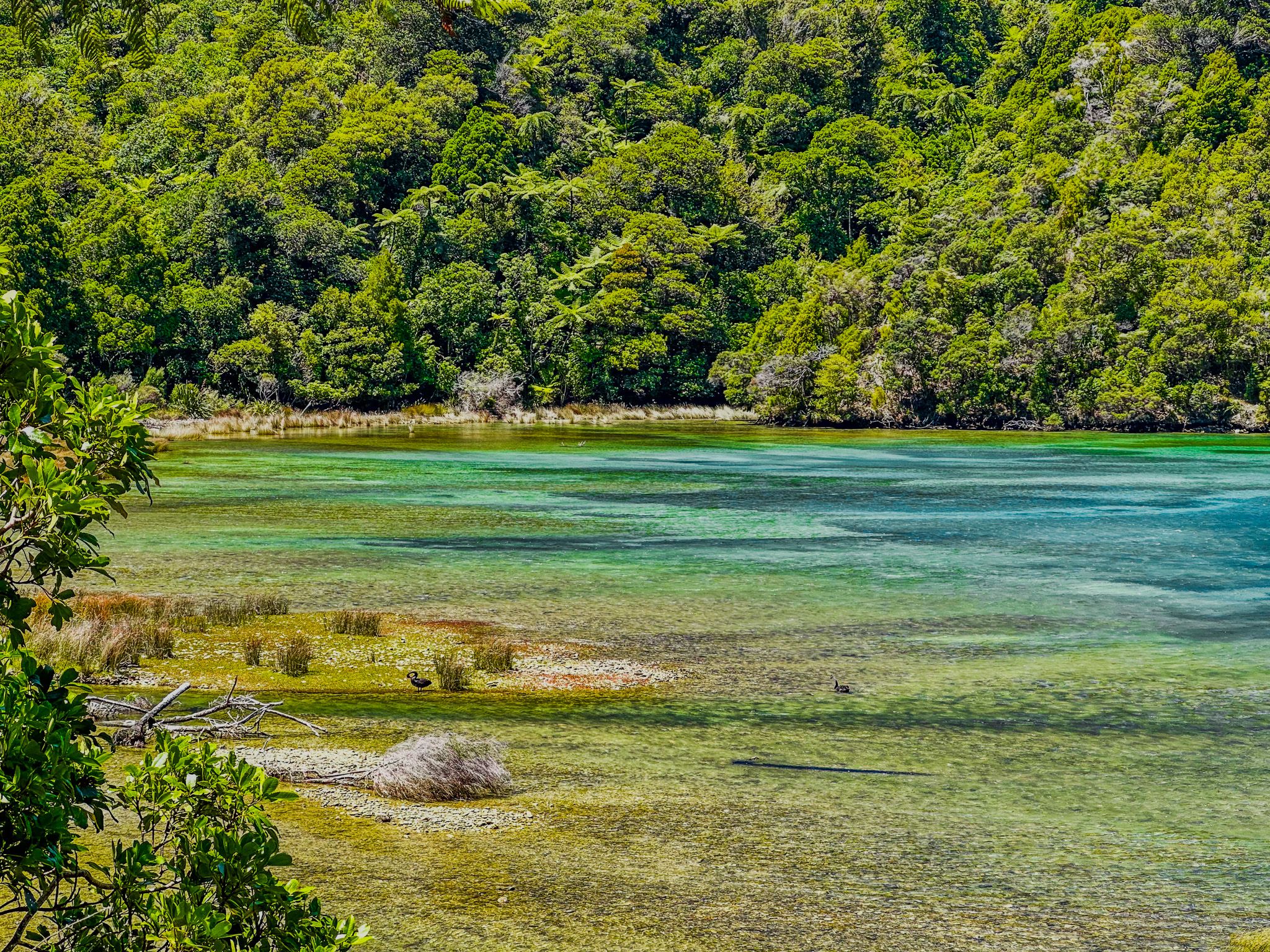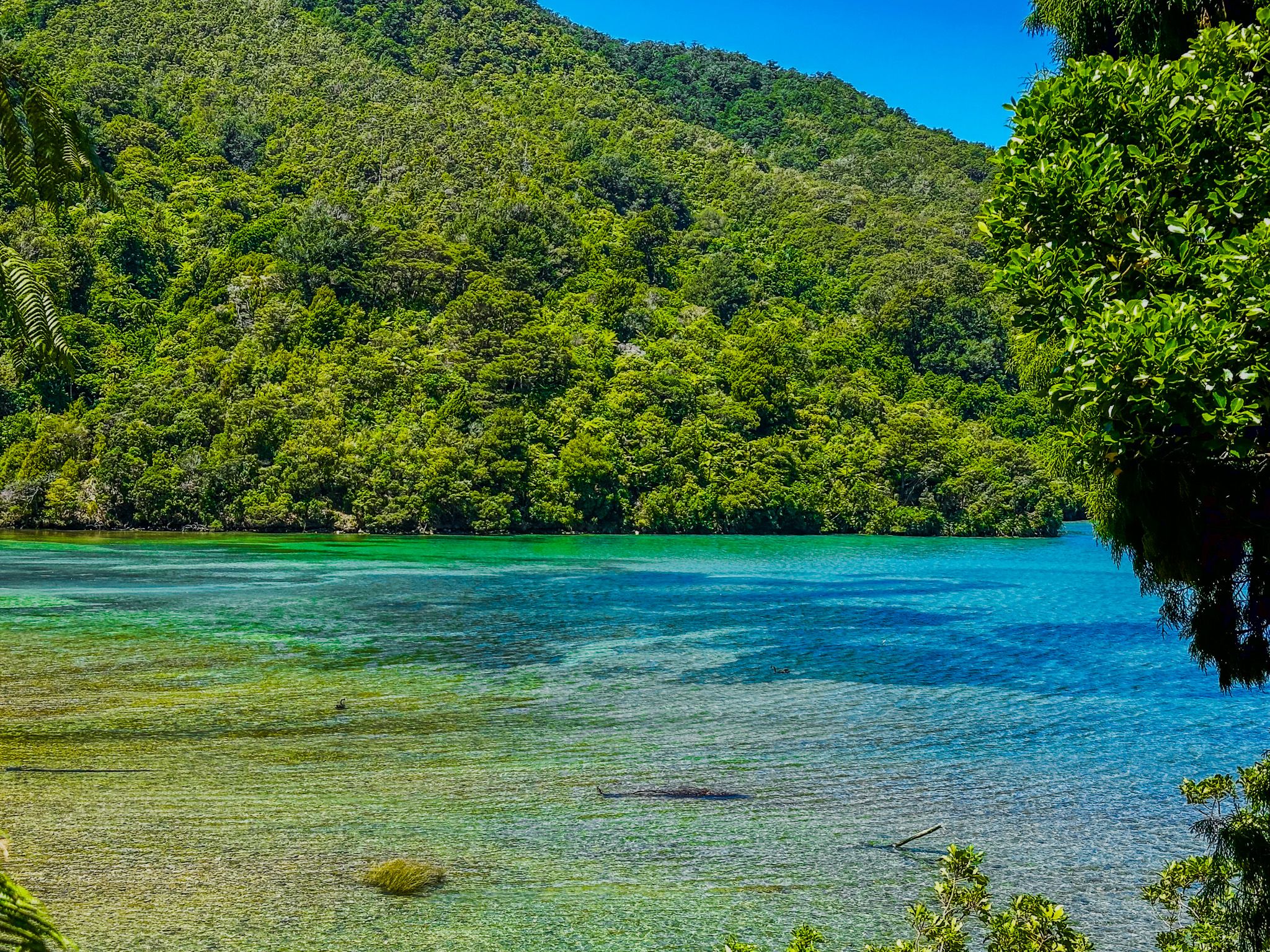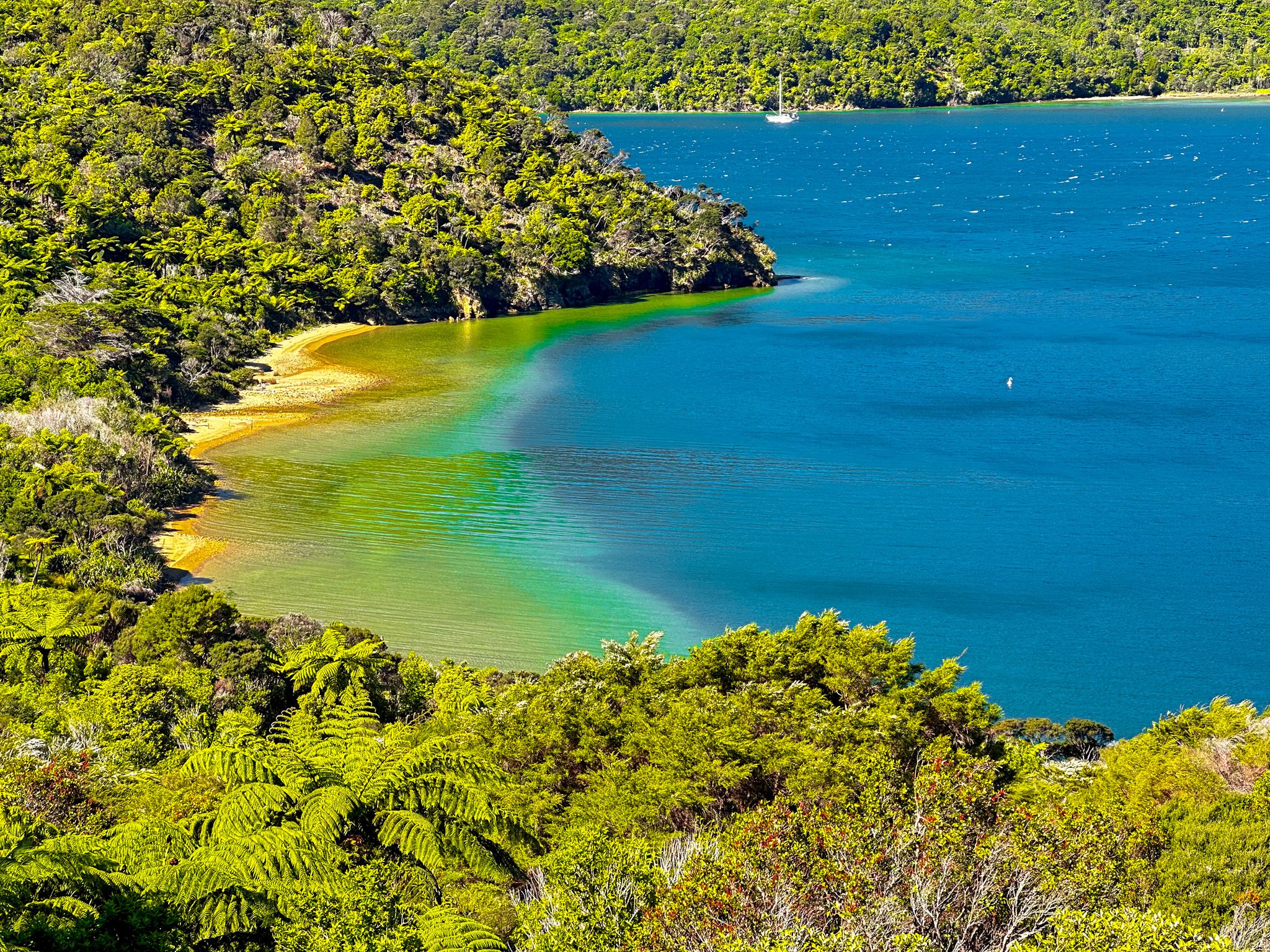Endeavour Inlet / Panaruawhiti is the largest of the many inlets, bays and coves within Queen Charlotte Sound. The inlet is at the northeast end of the sound, on the north side and lies between the Bay of Many Coves / Miritū Bay and Resolution Bay. There are collections of holiday homes on the west side of the inlet, around Punga Cove, and on the east side between the northernmost tip of the inlet and The Pines. These are connected by a section of the Queen Charlotte Track, which largely follows the coast from Punga Cove to the southeast side of the inlet.
The inlet is a good option for a short stay, with boat access and day walks on the Queen Charlotte Track. Furneaux Lodge to the north of The Pines and Punga Lodge and Punga Cove are well established and have restaurants and various accommodation options. There is also a DOC campsite at Camp Bay, just north of Punga Lodge, plus other smaller lodge options around The Pines.
Captain James Cook first visited the inlet in 1770 and named it for his ship, the Endeavour. At the time, it was essentially an ancient forest with seasonal occupation by several iwi. As Europeans arrived, they cleared most of the forest and tried to plant grass. One look at the terrain suggests how crazy this was - it is primarily steep and slip-prone! Mount Furneaux on the east side of the inlet is 823 metres high, and Grants Lookout on the west side is 853 metres, linked by ridges of 600 to 700 metres. Today, almost all of the inlet is returning to native forest, with about 30 to 50 years of regrowth to date.
There is also a crazy mining story, with an extended attempt to mine antimony in the inlet (a metal with a wide range of uses). The mineral deposit was discovered in 1873, and the mine was high above the valley near the 700-metre ridge. It was connected to a smelter in the valley by a tramway, and today, you can walk the Antinomy Mine Track that connects with Titirangi Road on the ridge line. However, the mine was never profitable, despite the efforts of several owners over 27 years. There was also a tragic ending in 1907 when the last mine manager Jaketh Wearne, after failing to reopen the mine, swallowed hydrochloric acid and died. But at its peak, there were 100 men in the small community at the top of the inlet. Follow the sign from the Queen Charlotte track to explore what is left.
